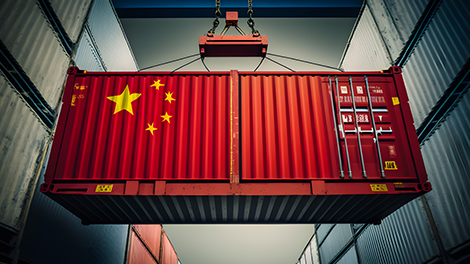How you or your shipper load your goods can impact your whole shipping process. Effective loading protects your goods so that they arrive in the expected condition. Proper packing can also help customs authorities understand what's inside the cargo and reduce the chances of a search that can delay the shipment.
Shippers are generally responsible for the loading of their goods into shipping containers. So it can be in your best interest to learn some of the industry tips that the World Transport Agency (WTA) have picked up along the way. In this article, we discuss suggestions for how to load your goods effectively for transportation.
Three steps to loading your cargo effectively
1. Pack your goods and make an inventory
When packing each of your goods into boxes, there are some essential things to consider. Firstly, check that the boxes or containers that are being used are of top quality. We suggest using brand new boxes to ensure their quality. The boxes that hold your goods will protect them for the entire journey, so they mustn't be damaged at all.
Next, you may want your shipper to write an inventory list to ensure they’ve noted exactly what you're sending and that it matches the order. As you're packing, ensure that your goods are packed tight and secure into their boxes. They shouldn't be allowed to move around inside as they can be damaged if they do. If there's empty space after you've packed everything you're sending, you can fill the space with packing filler to keep everything secure. You may want to do a final check that everything is secured and tight before taping up the boxes.
2. Load the goods into the shipping container
Once all your boxes are secure and ready to go, it's time to load them into the freight containers. There are three crucial factors to consider in this step as listed below:
Weight distribution
While freight containers appear to be sturdy and unmoveable, they can be put under rough conditions that threaten their stability. You should evenly distribute the weight of your cargo within your container. This means that you should try to place heavy boxes evenly around the floor, with lighter boxes in between.
There will also be a maximum load weight that the container can safely hold. It's crucial that you know this number and don't exceed it with the weight of your loaded cargo.
Area utilisation
If freight containers sway during their journey, they can move their contents around with force. This is why it's essential to cover the entire floor area of the container. If your cargo area is less than the container floor and you have free space, you should spread them out and fill the space with container bedding. Try to stack the tiers horizontally first and then move up to fill the next tier. You can use more bedding or straps on the top layer to keep all the boxes secure and tight.
Cargo compatibility
You can also consider the characteristics of your goods when loading them into the containers. Consider their weight, size, if they can be broken easily and whether they're hazardous before loading. When you've acknowledged their characteristics, you're in a better position to stack them to prevent damage.
Below are some suggestions on how to load your good effectively for transportation:
- Heavy items should be stacked near the bottom of containers and lighter ones higher up to increase stability.
- If items can be easily broken, you should place them near the top, where there is not much weight on top of them. You can also secure them with bedding or straps.
- You should pack hazardous items with special care to minimise their risk. There shouldn't be excessive weight on top of them, and they should be secured tightly.
- Avoid placing containers with liquids above dry, solid items. Liquids can present the risk of spillage and damaging the items underneath them.
3. Perform a final check
Once your boxes are loaded into the shipping containers, it's time to do a final check. You should check that each box and item inside the container is secure and tight to limit its movement. Check that the cargo tiers are level and that the bedding cushion fills the voids. Finally, perform an inventory check and count the boxes to ensure everything is correct.
Summary
Effective cargo loading minimises the risk of damages to your goods and facilitates cost-effective shipping for your business. This article touched on some suggestions that can help you load your cargo effectively. You may also want to consider using a logistics partner to optimise the entire process for you. WTA help shippers utilise the most efficient and cost-effective shipping solutions. Contact us today to find out more.






